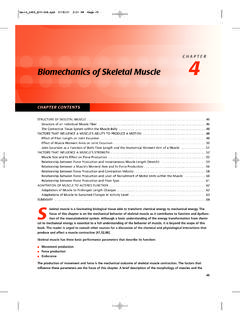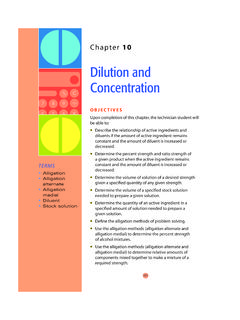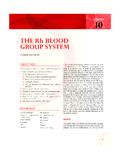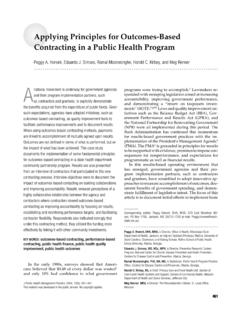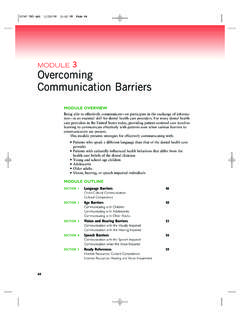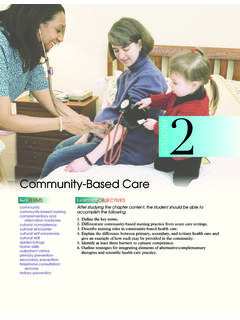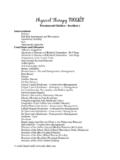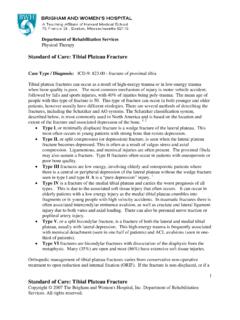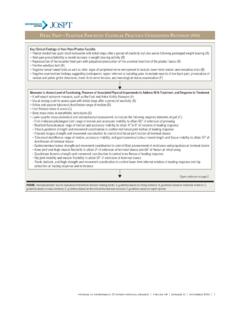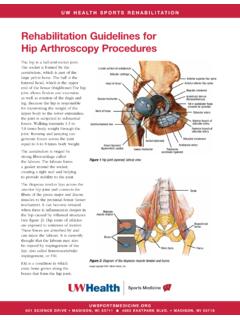Transcription of Musculoskeletal 14 System - Lippincott Williams & Wilkins
1 Musculoskeletal System 14. Chapter Outline Anatomy and Physiology, 542 Medical Terms, 558. Functions, 542 Adjectives and Other Related Structures, 542 Terms, 558. Terms Related to Bone Structure, 542 Symptoms and Medical Terms Related to the Skeleton and Conditions, 560. Bones, 542 Tests and Procedures, 568. Joints and Joint Movements, 546 Surgical Interventions and Terms Related to Joints and Joint Therapeutic Procedures, 572. Movements, 546 Medications and Drug Muscles, 548 Therapies, 578. Terms Related to Muscles, 549 Specialties and Specialists, 579. Abbreviations, 580. Word Parts, 553. Combining Forms, 553 Chapter Review, 582. Prefixes, 555. Suffixes, 555. Objectives After completion of this chapter you will be able to: 1. Describe the location of key bones and muscles in the body . 2. Define terms related to bone structure, joints, joint movements, and muscles. 3. Define combining forms, prefixes, and suffixes related to the Musculoskeletal System .
2 4. Define common medical terminology related to the Musculoskeletal System , including adjectives and related terms, symptoms and conditions, tests and procedures, surgical interventions and therapeutic procedures, medications and drug therapies, and specialties. 5. Explain abbreviations for terms related to the Musculoskeletal System . 6. Successfully complete all chapter exercises. 7. Explain terms used in medical records and case studies involving the Musculoskeletal System . 8. Successfully complete all pronunciation and spelling exercises, and complete all interactive exercises included with the companion Student Resources. 541 9/2/10 5:42:07 PM. 542 MEDICAL TERMINOLOGY. ANATOMY AND PHYSIOLOGY. Functions To give shape and structure to the body and provide support To allow movement To protect internal organs To store calcium and other minerals (bones). To produce certain blood cells (bone marrow). To produce heat (muscles). Structures The body has 206 bones, divided into the axial skeleton and appendicular skeleton.
3 The body has more than 600 muscles. Bones articulate (meet) at joints where muscles allow for different types of joint movements. Terms Related to Bone Structure (Fig. 14-1). Term Pronunciation Meaning bone marrow b n ma'r soft tissue within bone, with multiple functions including production of blood cells cancellous bone, syn. kan's -l s b n; sp n'j meshlike bone tissue (Fig. 14-2). spongy bone b n compact bone k m-pakt' b n harder, denser bone (Fig. 14-2). diaphysis d -af'i-sis the shaft of a long bone endosteum en-dos't - m membrane within medullary cavity epiphysis e-pif'i-sis the wider ends of a long bone epiphysial plate ep'i-fiz' - l pl t the growth area of a long bone medullary cavity med' -lar' kav'i-t space within long bone shaft filled with bone marrow metaphysis m -taf'i-sis the flared section of a long bone between the diaphysis and epiphysis os, pl. ossa os, os' bone osteoblast os't - -blast bone-forming cell osteoclast os't - -klast a cell that helps remove osseous (bony) tissue osteocyte os't - -s t bone cell periosteum per' -os't - m membrane surrounding a bone Terms Related to the Skeleton and Bones (Fig.)
4 14-3). Term Pronunciation Meaning The Skeleton axial skeleton ak's - l skel' -t n bones of the skull, spine, and chest appendicular skeleton ap' n-dik'y -l r skel' -t n bones of the upper and lower limbs, shoulder, and pelvis thorax th 'raks the chest (continued). 542 9/2/10 5:42:10 PM. Chapter 14 Musculoskeletal System 543. Cancellous bone Proximal epiphysis Epiphyseal plate Periosteum Compact bone Medullary cavity Diaphysis Distal epiphysis Figure 14-2 Types of bone tissue. Cancellous bone makes up most of the epiphysis of this long bone (arrows). A. Figure 14-1 The external and internal thin layer of compact bone is seen at composition of a long bone. the surface. Terms Related to the Skeleton and Bones (continued). Term Pronunciation Meaning Bones acetabulum as- -tab'y -l m the socket of the pelvic bone where the femur articulates acromion -kr 'm -on lateral upper section of the scapula calcaneus kal-k 'n - s bone of the heel carpal bones kahr'p l b nz the eight bones of the wrist clavicle klav'i-k l collarbone cranium kr 'n - m the skull; composed of eight bones femur f 'm r bone of the upper leg fibula fib'y -l smaller, outer bone of the lower leg humerus hy 'm r- s bone of the upper arm hyoid h 'oyd bone beneath the mandible lamina lam'i-n posterior section of a vertebra mandible man'di-b l lower bone of the jaw (continued).
5 543 9/2/10 5:42:11 PM. 544 MEDICAL TERMINOLOGY. Cranium Mandible Vertebrae: Clavicle Acromion Cervical Scapula Ribs Thoracic Sternum Humerus Costal Lumbar cartilages Sacrum Pelvic bone Radius Ulna Carpal bones Metacarpal Acetabulum bones Phalanges Coccyx Femur Patella Tibia Fibula Tarsal bones Metatarsal bones Phalanges Calcaneus Figure 14-3 An anterior view of the skeleton with major bones identified. Terms Related to the Skeleton and Bones (continued). Term Pronunciation Meaning maxilla mak-sil' upper bone of the jaw metacarpal bones met' -kahr'p l b nz the five bones of the palm of the hand metatarsal bones met' -tahr's l b nz the five bones of the foot patella p -tel' kneecap pelvic bone pel'vik b n the hip bone, composed of three fused bones on each side ischium is'k - m posterior lower section of the pelvic bone ilium il' - m upper section of the pelvic bone pubis py 'bis anterior lower section of pelvic bone; pubic bone phalanges f -lan'-j z the bones of the fingers and toes; 14 in each hand or foot (continued).
6 544 9/2/10 5:42:13 PM. Chapter 14 Musculoskeletal System 545. Terms Related to the Skeleton and Bones (continued). Term Pronunciation Meaning radius r 'd - s the outer of two bones of the lower arm ribs ribz long curved bones that form the bony wall of the chest scapula skap'y -l shoulder blade sternum st r'n m anterior bone of thorax; breast bone tarsal bones tahr's l b nz the seven bones of the ankle tibia tib' - larger inner bone of the lower leg ulna l'n the more inner of two bones of the lower arm vertebra v r't -br a bone of the spine (Fig. 14-4). cervical vertebrae (C1 C7) s r'vi-k l v r't -br bones of neck thoracic vertebrae (T1 T12) th r-as'ik v r't -br bones of midspine lumbar vertebrae (L1 L5) l m'bahr v r't -br bones of lower back sacrum s 'kr m five fused vertebrae below the lumbar spine coccyx kok'siks four fused vertebrae at the lower end of the spine, below the sacrum; the tailbone xiphoid process z 'foyd pros'es lower section of the sternum Cervical vertebrae Thoracic vertebrae Lumbar vertebrae Sacrum Figure 14-4 The vertebral column Coccyx showing the types of vertebrae.
7 545 9/2/10 5:42:14 PM. 546 MEDICAL TERMINOLOGY. View the Vertebral Disk video on the electronic Student Resources to learn more about the structure of the bones of the spine. Joints and Joint Movements Joints occur wherever bones come together. Joints are categorized by the movements they perform. Terms for joint movements are based on the type and direction of movement. Terms Related to Joints and Joint Movements Term Pronunciation Meaning Joints articulation ahr-tik'y -l 'sh n the site where bones come together bursa b r's a fluid-filled fibrous sac within some joints cartilage kahr'ti-l j dense connective tissue attached to bone in many joints synovial joint, syn. si-n 'v - l joynt, a joint that moves freely; the joint cavity contains synovial fluid diarthrosis d 'ahr-thr 'sis (Fig. 14-5). intervertebral disk in't r-v r't -br l disk platelike structure of connective tissue between vertebrae (or disc). ligament lig' -m nt band of strong connective tissue joining bones (continued).
8 Femur Synovial membrane Synovial fluid Patella Articular cartilage Bursae Meniscus Tibia Figure 14-5 The knee is a synovial joint. 546 9/2/10 5:42:15 PM. Chapter 14 Musculoskeletal System 547. Terms Related to Joints and Joint Movements (continued). Term Pronunciation Meaning meniscus m -nis'k s cartilage structure in the knee suture s 'ch r an immovable joint, such as that which joins the bones of the skull SUTURE When we think of joints, we think of those joints that move. Your skull also has joints, but the joints of the skull do not move. These joints, called sutures, hold the bones of the skull together, just as surgical sutures (or stitches ) hold two surfaces together. symphysis sim'fi-sis a joint that moves only slightly synovial fluid si-n 'v - l fl 'id lubricating fluid in a freely moving joint tendon ten'd n band of fibrous connective tissue attaching a muscle to a bone Joint Movements (Fig. 14-6). abduction ab-d k'sh n moving away from the midline adduction -d k'sh n moving toward the midline circumduction s r'k m-d k'sh n moving in a circular manner inversion in-v r'zh n turning inward eversion -v r'zh n turning outward dorsiflexion d r-si-flek'sh n bending foot upward plantar flexion plan'tahr flek'sh n bending foot downward extension eks-ten'sh n motion that increases the joint angle flexion flek'sh n motion that decreases the joint angle pronation pr -n 'sh n turning downward (palm of hand or sole of foot).
9 Supination s 'pi-n 'sh n turning upward (palm of hand or sole of foot). rotation r -t 'sh n moving in circular direction around an axis Adduction, abduction: When distinguishing abduction from adduction, remember the common word abduct, meaning to take away. Adduction has the word add, . meaning to bring to. View the animation entitled Muscle Extension and Flexion for a demonstration of muscles at work. 547 9/2/10 5:42:19 PM. 548 MEDICAL TERMINOLOGY. Extension Flexion Abduction Medial rotation Lateral rotation Adduction Medial rotation Extension Flexion Lateral rotation Abduction Adduction Eversion Inversion Plantar flexion Dorsiflexion Supination Pronation Cirumduction Figure 14-6 Most joints are capable of several types of movement. Muscles The three types of muscle tissue in the body are skeletal muscle, smooth muscle, and cardiac muscle. Muscles are composed of bundles of muscle fibers along with other tissues. Tendons attach muscles to bones in or near joints.
10 548 9/2/10 5:42:20 PM. Chapter 14 Musculoskeletal System 549. Frontalis Temporalis Orbicularis oculi Occipitalis Zygomaticus Sternocleido- Sternocleido- Masseter mastoid mastoid Orbicularis oris Trapezius Trapezius Infraspinatus Deltoid Deltoid Rhom- Pectoralis Teres major boideus Serratus major Teres minor Latissimus anterior Biceps dorsi Triceps Rectus brachii brachii Brachialis abdominis Brachialis Brachio- External External radialis Brachio- oblique oblique radialis Gluteus Tensor medius fasciae latae Sartorius Gluteus maximus Adductor Biceps femoris Rectus femoris longus Adductor Gracilis Semitendinosus magnus Vastus lateralis Vastus medialis Semimembranosus Sartorius Peroneus longus Gastrocnemius Extensor Gastrocnemius digitorum longus Soleus Soleus Tibialis Calcaneal tendon anterior Peroneus longus A. B. Figure 14-7 Skeletal muscles of the body . A. Anterior view. B. Posterior view. Terms Related to Muscles (Fig. 14-7). Term Pronunciation Meaning agonist ag' n-ist skeletal muscle that creates a movement by contracting; prime mover antagonist an-tag' -nist skeletal muscle that opposes an agonist muscle and relaxes when the agonist contracts cardiac muscle kahr'd -ak m s' l heart muscle (Fig.)
